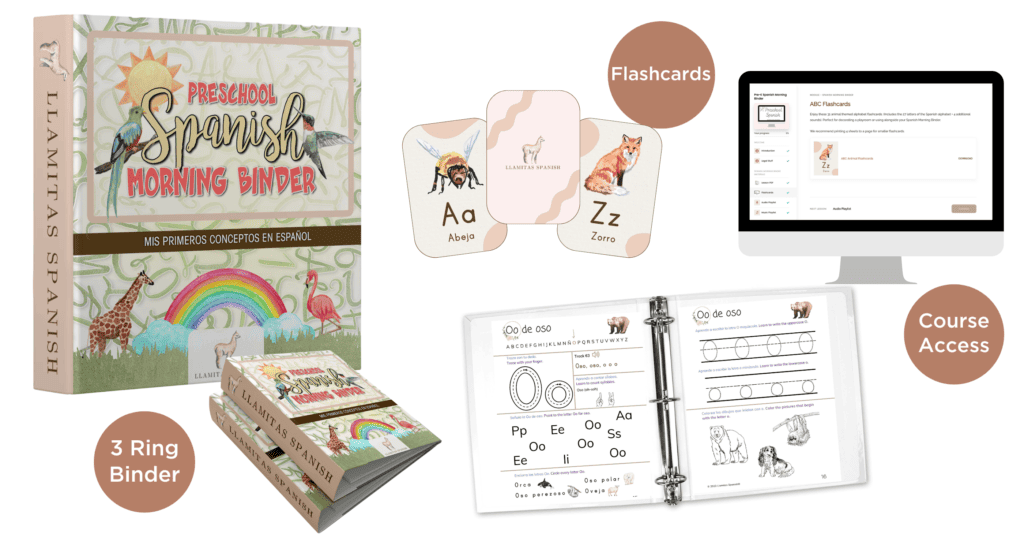In this post: Teach your kids common adjectives and phrases to express their emotions and feelings in Spanish.
Most kids are great at expressing their emotions through actions and body language such as facial expressions. Sometimes even too good – we’re talking full-on sour patch kids, first they’re sour but then they can also be oh so sweet and heart-warming.
In reality, we all learned these non-verbal forms of communication even before we were able to communicate them with words.
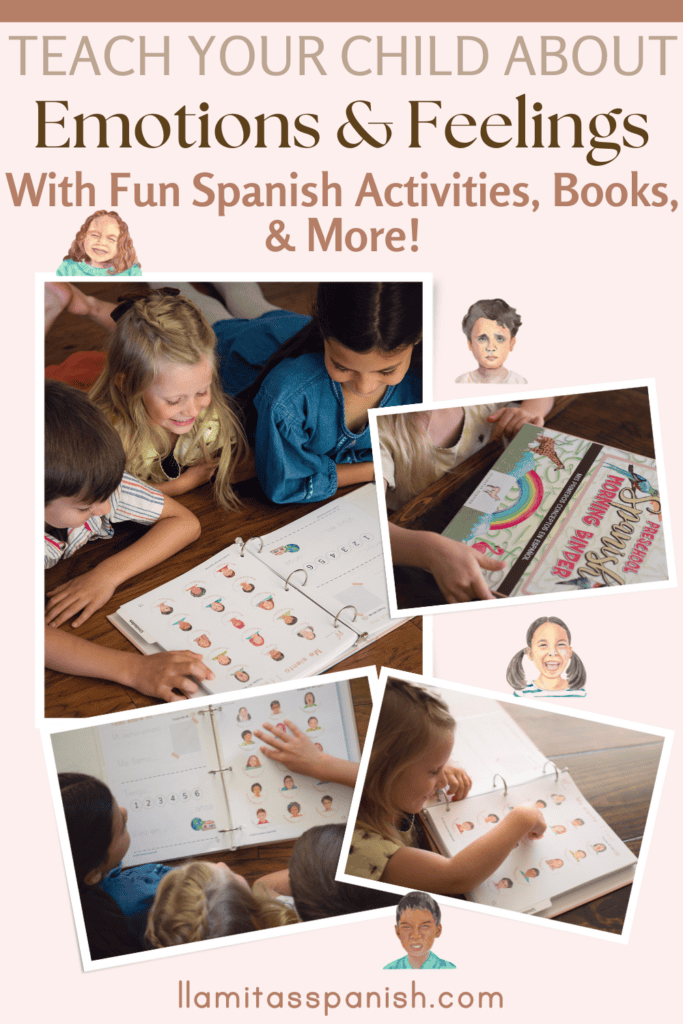
This post contains affiliate links.
Young children especially are full of strong feelings and emotions, and we can support them by helping them verbally express how they are feeling. That way we can better understand their thoughts and desires while working to address their needs and concerns. Nonetheless, expressing emotions can be easier said than done even for us as adults.
A great place to start would be to start or continue giving your kids the freedom to do so in English and you’d find that it’s an even smoother transition when they learning to do so in Spanish.
Using the rules, tips and resources outlined in today’s post, they’ll be expressing their emotions and feelings in Spanish in no time.
Table of Contents
Llamitas Spanish Morning Binder
If you’re looking for the ideal starter pack for toddlers and preschoolers, check out our Preschool Morning Binder. It includes daily introductions like talking about your feelings, the calendar, weather and writing one’s name.
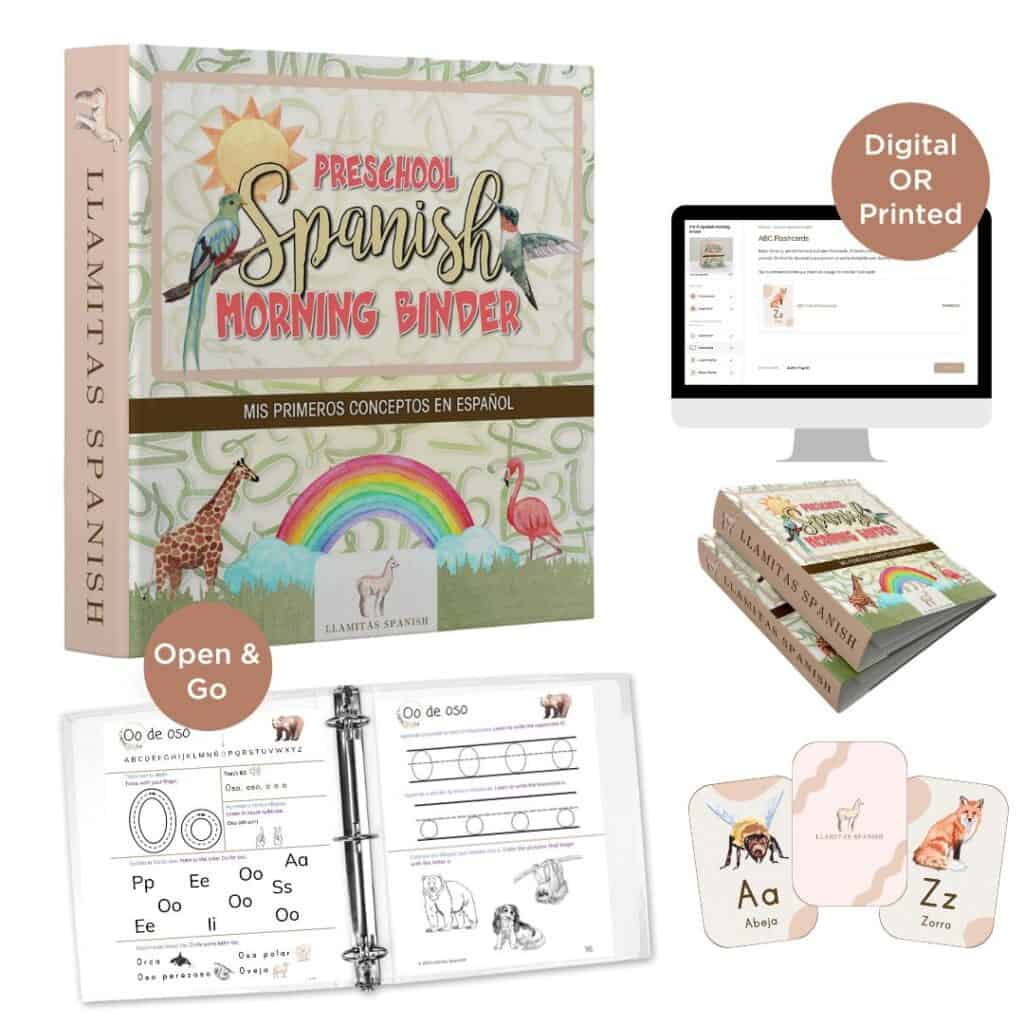
It also comes with 180 pages of Spanish printables, 27 mini units for the animal-themed Spanish alphabet along with activities such as tracing, letter recognition, coloring pages, colors, shapes, counting sheets and more!
Spanish Emotions Chart
On the topic of today’s blog, you’ll also be happy to know that you can purchase a physical poster in our shop with all the vocabulary we’re about to teach you! It’s shipped directly to your door. That way, it can even be displayed in their room or around the house.
The digital version (print at home) is available as a FREE bonus when you purchase the Preschool Morning Binder.
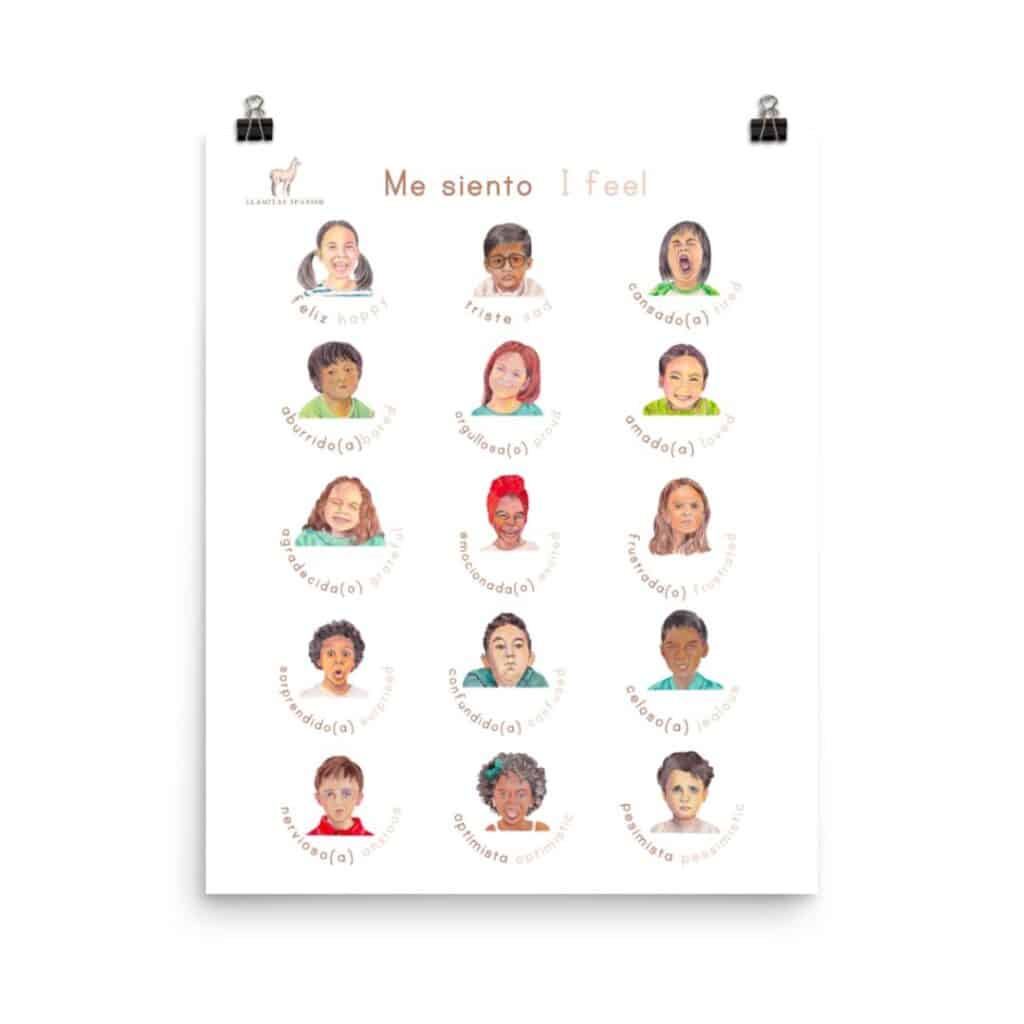
Common Adjectives to Describe Emotions and Feelings in Spanish
Here are some of the most common adjectives used to describe emotions and feelings in Spanish:
Me siento… I feel:
| feliz | happy |
| triste | sad |
| optimista | optimistic |
| pesimista | pessimistic |
| cansado/a | tired |
| aburrido/a | bored |
| orgulloso/a | proud |
| amado/a | loved |
| agradecido/a | thankful |
| emocionado/a | excited |
| frustrado/a | frustrated |
| sorprendido/a | surprised |
| confundido/a | confused |
| celoso/a | jealous |
| nervioso/a | nervous |
Spanish Adjectival Agreement
You would notice that in the adjectives listed above, the same word can end either in -o or -a. If you recall one of our earlier blogs on colors, we spoke about this rule in Spanish which states that adjectives must agree with the noun they describe both in gender (whether masculine or feminine) and number (whether singular or plural).
Though there are a few exceptions, masculine words typically end in -o while feminine words end in -a.
While this may take some getting used to, the more you understand and practice these fundamental rules, the easier it gets. Sometimes the hardest part of learning a foreign language is actually getting started, finding the right resources and staying consistent.
Related post: How to Add a Foreign Language to Your Homeschooling
To help you out, here’s a complete table that you can refer to when using these adjectives in Spanish.
| Masculine singular | Feminine singular | Masculine plural | Feminine plural |
| feliz | feliz | felices | felices |
| triste | triste | tristes | tristes |
| optimista | optimista | optimistas | optimistas |
| pesimista | pesimistas | pesimistas | pesimistas |
| cansado | cansada | cansados | cansadas |
| aburrido | aburrida | aburridos | aburridas |
| orgulloso | orgullosa | orgullosos | orgullosas |
| amado | amada | amados | amadas |
| agradecido | agradecida | agradecidos | agradecidas |
| emocionado | emocionada | emocionados | emocionadas |
| frustrado | frustrada | frustrados | frustradas |
| sorprendido | sorprendida | sorprendidos | sorprendidas |
| confundido | confundida | confundidos | confundidas |
| celoso | celosa | celosos | celosas |
| nervioso | nerviosa | nerviosos | nerviosas |
Spanish adjectives that use the verb ‘tener’
Just when you thought you’ve seen it all, now we’re talking about adjectives used to express emotions and feelings that use the verb ‘tener’ meaning ‘to have’. Instead of saying ‘me siento’ which translates to ‘I feel’, you’d say ‘tengo’ meaning ‘I have’.
Though it may seem strange to use this verb, don’t think about the literal translation in English. Instead, focus on the meaning in Spanish as it’s used to express a particular emotion or feeling.
Take a look at some of the common phrases using the verb ‘tener’:
Tengo hambre
I am hungry
Tengo sed
I am thirsty
Tengo sueño
I am sleepy
Tengo miedo
I am scared
Tengo calor
I am hot or I feel hot
Tengo frío
I am cold or I feel cold
Tengo prisa
I’m in a hurry
Spanish Books about Emotions and Feelings
Here are our favorite book recommendations when it comes to expressing emotions:
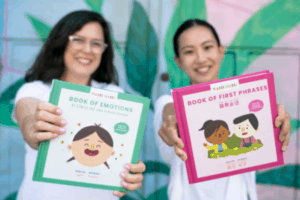
This book teaches kids to express their emotions in Spanish while also including useful synonyms and antonyms.

Enjoy this bilingual book of emotional expressions inspired by one of the most recognized symbols of el Dia De los Muertos (Day of the Dead), La Catrina.

What happens when two talkative giraffes stumble upon a baby ostrich? They ask all about how it feels and they eventually become friends.
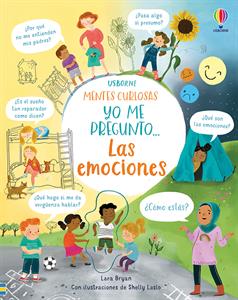
This book features a question-and-answer format that allows your kids to learn how to express their emotions while also being able to ask the question of others.

Using each letter of the alphabet, this story uses colorful illustrations to teach kids how to talk about their emotions, express positive emotions and learn strategies to calm down.

Follow along the story of a ghost called Luna as she learns to express her emotions. This book is also great for learning capital letters, rhyming phrases and simple vocabulary.

When your kids get angry and shout or throw tantrums, they’re not behaving badly, they’re simply expressing their emotions. This book is for kids just as much as adults as it teaches us how to understand and support them when they get angry.

This book of whimsical characters uses text, color and illustrations to convey different emotions and feelings through the eyes of kids.

This bilingual book is a must-read. It’s great for kids to learn about and appreciate the beauty of diversity, friendship and self-love.

In this book entitled, “Gratitude is My Superpower”, teach your kids to be grateful for the things they have and the people around them while also fostering a spirit of positivity.

Help your kids to make sense of their many emotions with this colorful book of illustrations.
Don’t forget to check out our Emotions Chart in Spanish and get yours today! The digital version is a FREE bonus when you purchase the Preschool Morning Binder!
